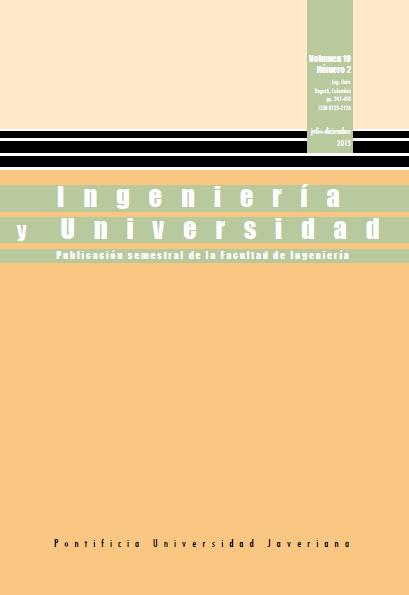Abstract
This article presents the results of the analysis of the effect of aging on the properties of asphalt and asphalt mixtures. The objective of this study was to compare the properties of the original asphalt and aged asphalt and the dynamic modulus of asphalt mixtures. The long-term aging was simulated by using Pressure Asphalt Vessel (PAV). Marshall and RAMCODES methodologies were used to determine the formula of work; values of dynamic modulus of designed mixtures were obtained by the indirect tensile test, using the Nottingham Asphalt Tester (NAT). The results showed an increase in the rigidity of the aged asphalt. Also, an increase of the stability and a decreased flow in the mixtures made with this type of binder was found. The dynamic modulus values of the mixtures containing aged asphalt showed an increase up to three times compared with those elaborated with original asphalt mixtures.
[2] X. Vargas y F. Reyes, “El fenómeno de envejecimiento de los asfaltos”, Ingeniería e Investigación, vol. 30, pp. 27-44, 2010.
[3] M. Parada, A. J. Lepesqueur y B. Caicedo, Estudio del envejecimiento de mezclas asfálticas por oxidación. Bogotá: Universidad de los Andes, 2005.
[4] Instituto Nacional de Vías. Especificaciones de construcción de carreteras. Norma. INV. E-751-07. Bogotá, 2007.
[5] Instituto Nacional de Vías. Normas de ensayos de materiales. Artículo 400-07. Bogotá, 2007.
[6] J. Puello Méndez, N. Afanasjeva y M. Álvarez Cifuentes, “Análisis de la degradación térmica de asfaltos mediante termogravimetría”, Asfaltos y Pavimentos, no. 26, 2013.
[7] R. E. Villegas Villegas, J. P. Aguiar Moya, L. G. Loría Salazar, A. Navas Carro, “De la consistencia al desempeño. Nueva tendencia en la compra, control de calidad y diseño de los asfaltos en Latinoamérica”, Asfaltos y Pavimentos, no. 25, 2012.
[8] L. Jaimes Martínez, “Variación de resultados en la determinación de viscosidad de asfaltos y residuos (RTOF) por diferentes métodos”, Asfaltos y Pavimentos, no. 23, 2011.
This journal is registered under a Creative Commons Attribution 4.0 International Public License. Thus, this work may be reproduced, distributed, and publicly shared in digital format, as long as the names of the authors and Pontificia Universidad Javeriana are acknowledged. Others are allowed to quote, adapt, transform, auto-archive, republish, and create based on this material, for any purpose (even commercial ones), provided the authorship is duly acknowledged, a link to the original work is provided, and it is specified if changes have been made. Pontificia Universidad Javeriana does not hold the rights of published works and the authors are solely responsible for the contents of their works; they keep the moral, intellectual, privacy, and publicity rights.
Approving the intervention of the work (review, copy-editing, translation, layout) and the following outreach, are granted through an use license and not through an assignment of rights. This means the journal and Pontificia Universidad Javeriana cannot be held responsible for any ethical malpractice by the authors. As a consequence of the protection granted by the use license, the journal is not required to publish recantations or modify information already published, unless the errata stems from the editorial management process. Publishing contents in this journal does not generate royalties for contributors.


